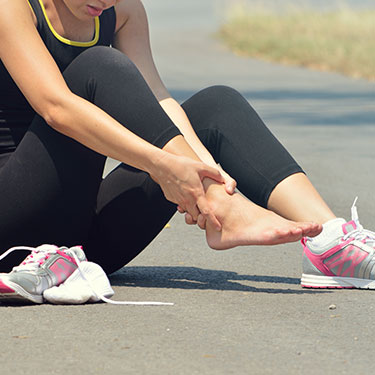Common Preseason Injuries and How to Treat Them
Preseason for our winter sports is here! And given the sporadic two years we have had due to COVID-19, it is more important than ever we are preparing our bodies. It’s important to work with your coaches and allied health team, to prevent preseason injuries and ensure you are ready for game day. Here we detail common preseason injuries and how to treat them.
Research indicates that during preseason, we are more at risk of mild injuries to the lower limb such as sprains, strains and overuse injuries, specifically achilles tendinitis. So let’s get into some basics of injuries.
Strains
A strain, frequently referred to as a “pulled muscle” is an injury to the muscle belly or tendon, often as a result of overstretching of the muscle. There are three grades of muscular strains:
- Grade I mild damage to individual muscle fibers (less than 5%) resulting in minimal loss of strength and function
- Grade II results in damage to a greater percentage of the muscle fibers, including partial but not complete tearing
- Grade III involves complete rupture of of the muscle or tendon
Immediate pain at the site of the strain is the most common symptom, pain will also increase on activation of the muscle that has been strained. You will often notice a decrease in range of motion of the muscle and surrounding joints and depending on the severity of the injury swelling and bruising can also be present.
Ankle Sprains
A lateral ankle sprain, often referred to as a “rolled ankle” occurs due to the joints and ligaments being stretched beyond their normal ranges of motion. This can lead to overstretching and tearing of the ligaments that support the outside of the ankle joint. Ligaments help to stabilise and prevent excessive movement of the ankle.
As with a muscular strain, joint sprains also have three levels of grading:
- Grade I overstretching or partial tearing of the ligaments, resulting in mild swelling and tenderness, slight or no functional loss and no mechanical instability of the joint.
- Grade II incomplete ligament tear, you may experience moderate pain, swelling and bruising, pain on weight bearing, and mild to moderate instability of the associated joint.
- Grade III complete tear and loss of ligament integrity, resulting in severe pain, swelling and bruising, inability to bear weight, severe mechanical instability.
Achilles Tendinitis
Tendinitis is an overuse injury that generally occurs at the attachment site of the tendon. The tendon is fibrous connective tissue that attaches muscle to bone.
Achilles tendinitis is commonly seen in preseason training, with pain occurring at the back of the heel. It often begins as a mild aching pain that will notably increase over time, and often be most prominent after playing sports, or even with day to day activities such as climbing stairs. The site of pain may be tender to touch, you may experience stiffness and loss of range of motion and it is not uncommon to experience increased stiffness in the mornings or after periods of rest.
When to Book an Appointment?
It is always a good idea to seek advice from your allied health professional regarding preseason injuries. Although the RICE (rest, ice, compression, elevation) method is commonly used for mild acute injuries, soft tissue therapy, laser therapy and shock wave can assist in speeding up the tissue healing time frame. It is also important that you are rehabilitating the injured joint/muscle to avoid reinjury and to ensure a successful season.

Author:
Sam Volarich – Osteopath




